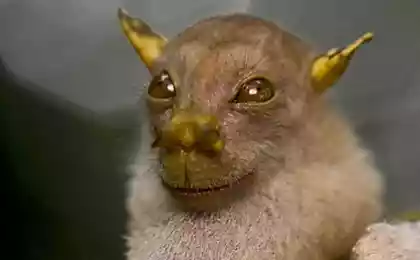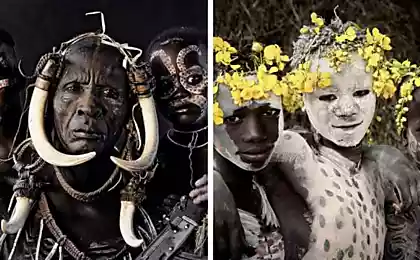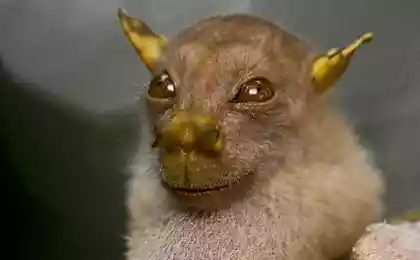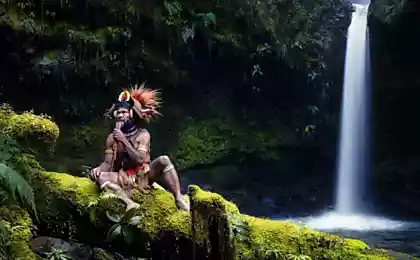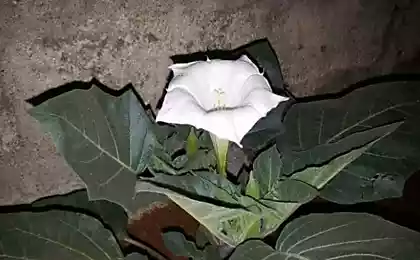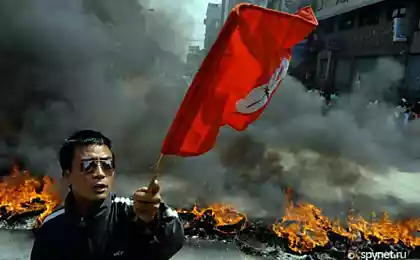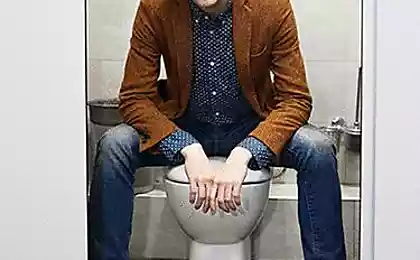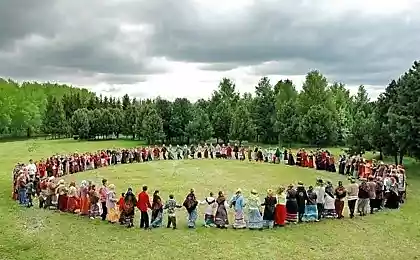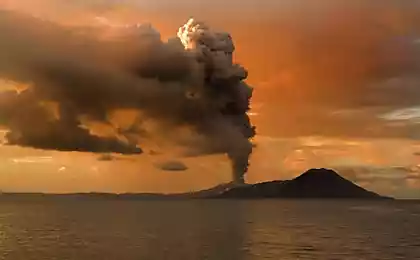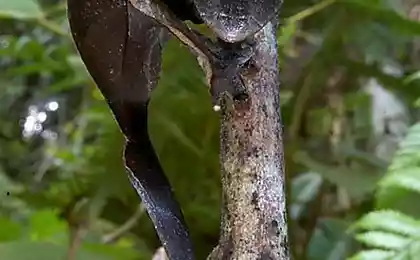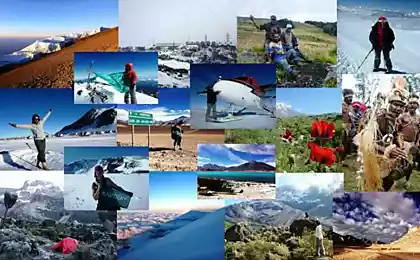1383
Papua New Guinea - the changing culture
1. The traditional dress in the village of Chimbu Province, Papua New Guinea, on December 18, 2008. These costumes worn on special occasions - namely, tribal meeting Sing Sing on Moka ritual ceremonies compensation, marriage ceremonies and feasts. (Brent Stirton / Getty Images)
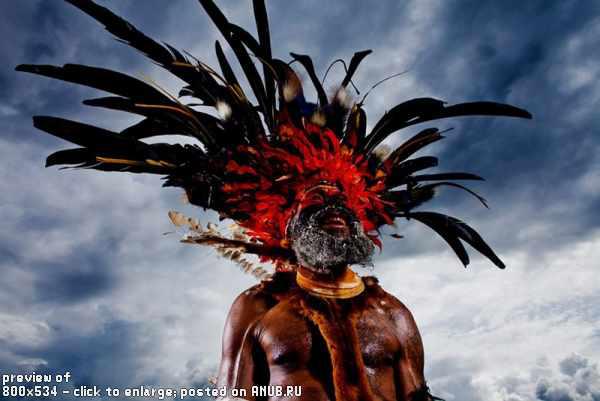
2. Photo Juli Uigmana the meeting Sing Sing, Tari Gap, Papua New Guinea on 17 December 2008. (Brent Stirton / Getty Images)
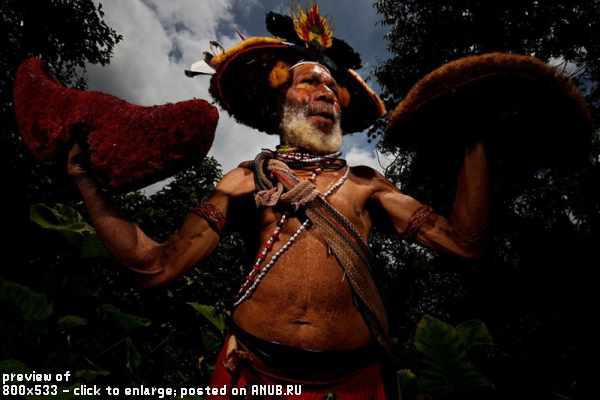
3. Juli Uigman expects a shower in my room in the Tari Gap, Papua New Guinea on 17 December 2008. He smokes and does traditional paint on the face, the rain then washed it. (Brent Stirton / Getty Images)
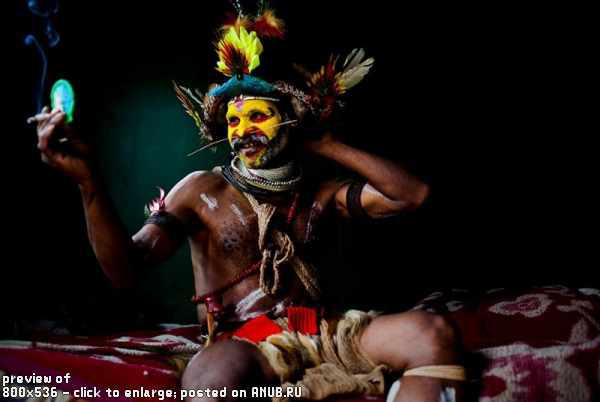
4. Photograph of the traditional "dirty man" in a village in the province of Chimbu. (Brent Stirton / Getty Images)
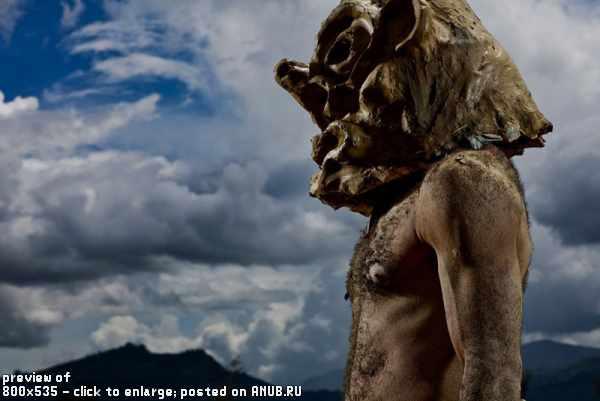
5. tribal ceremony with the image of "spirits", also known as the "skeleton" that attack wood spirit, known here under the name of the Omo Masalai in the village in the province of Chimbu. (Brent Stirton / Getty Images)
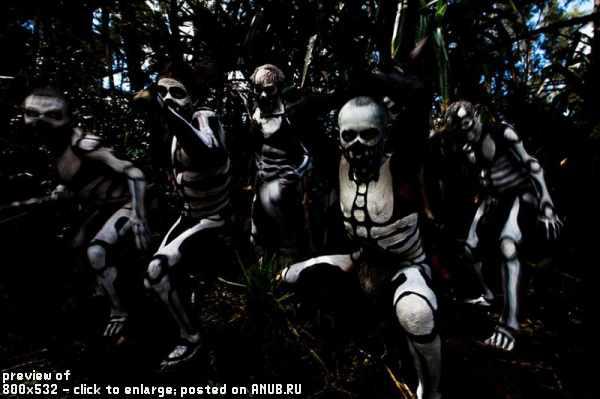
6. Photos from the ceremony, the bride price in the village of Chimbu Province, Papua New Guinea. (Brent Stirton / Getty Images)
7. Photos from the Sepik River - a remote region of Papua New Guinea. Here the lifestyle is still almost entirely dependent on relations between people and nature. (Brent Stirton / Getty Images)
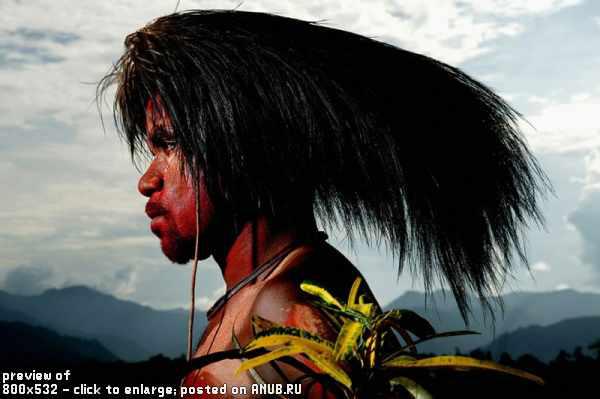
8. Tribe Karawari Sepik River in December 15, 2009. (Brent Stirton / Getty Images)
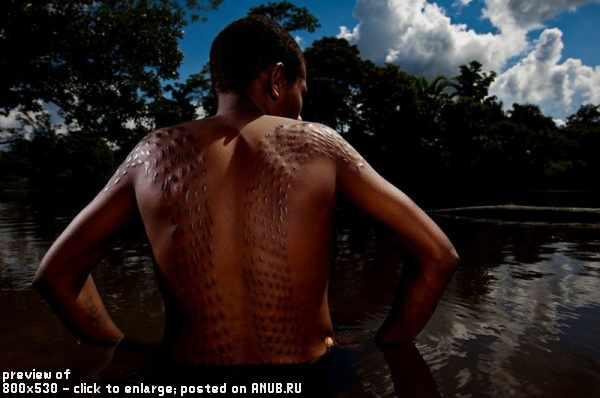
9. Tribe Karawari Sepik River in December 15, 2009. (Brent Stirton / Getty Images)
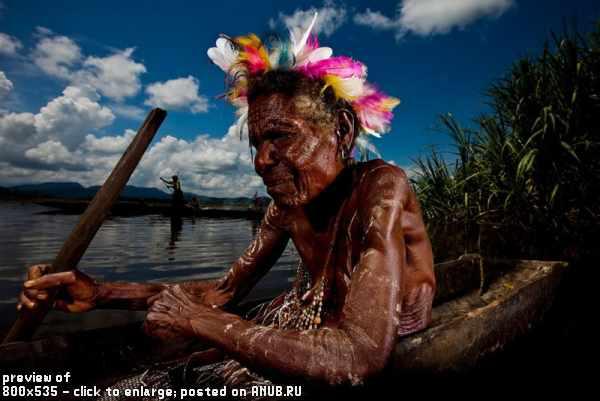
10. The village elder in a traditional ceremonial costumes in Mount Hagen December 16, 2008. (Brent Stirton / Getty Images)
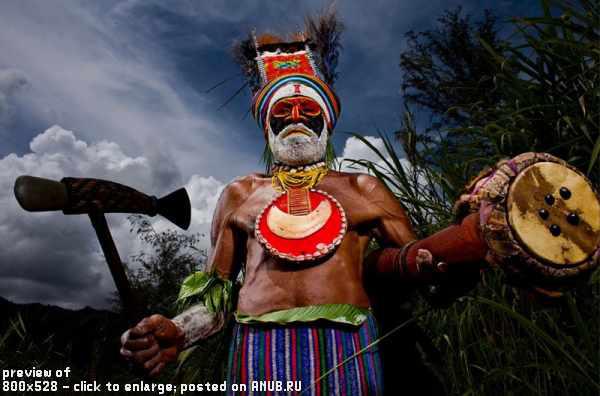
11. Local people on the river Fly - a remote region of Papua New Guinea, where the lifestyle also comes from the relationship between humans and nature. (Brent Stirton / Getty Images)
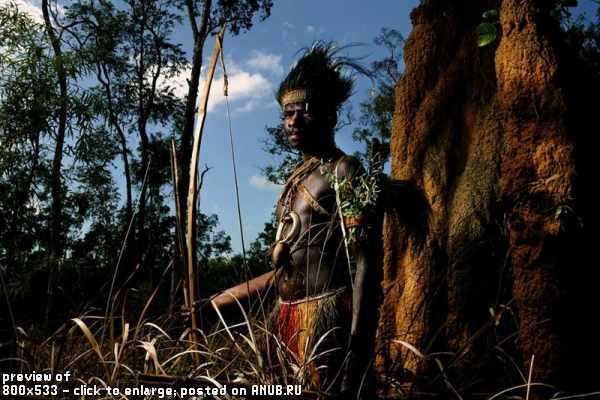
12. Tribe Karawari living in the center of the river Sepik, December 15, 2008. Karawari - the most remote tribes living in the floodplain. Many villages are located along the river. The most recent settlement dates back 1996 years. (Brent Stirton / Getty Images)
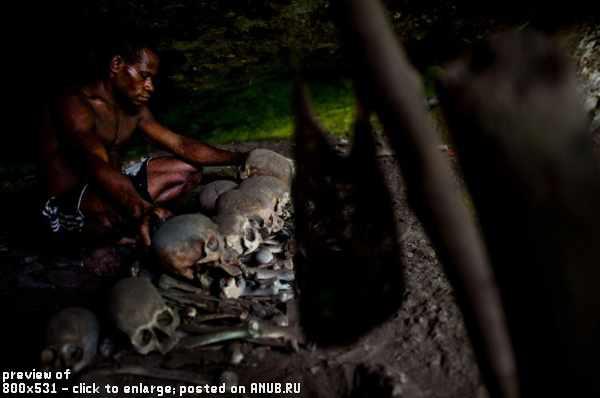
13. Tribe Karawari in the center of the Sepik River. (Brent Stirton / Getty Images)
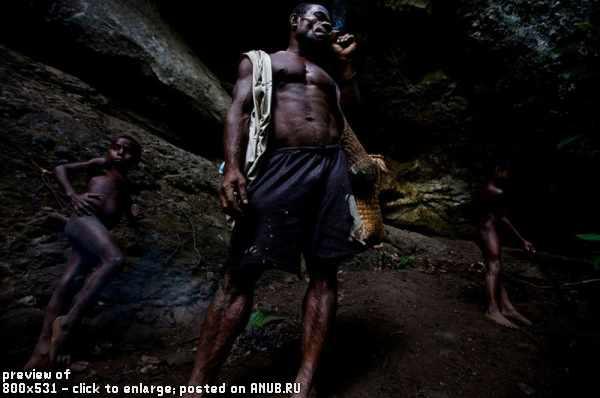
14. Hunting for wild boar and cassowary in remote areas along the shores of Lake Myurrye, Papua New Guinea, January 1, 1009. These communities live in harmony with nature. They hunt, fish, and are engaged in agriculture, but always do so in complete harmony with nature. They drove away Malaysian loggers, harm the environment. (Brent Stirton / Getty Images)
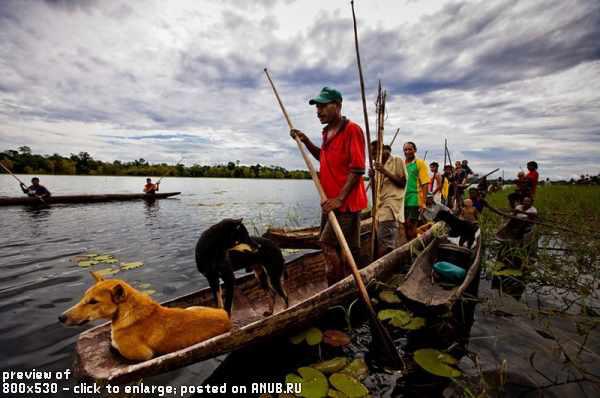
15. Hunting for wild boar and cassowary in remote areas along the shores of Lake Myurrye, Papua New Guinea, January 1, 1009. (Brent Stirton / Getty Images)
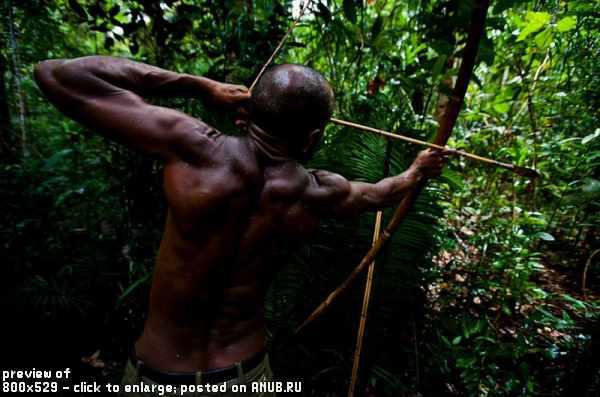
16. Locals River Fly - a remote region of Papua New Guinea, where people live in harmony with nature. (Brent Stirton / Getty Images)
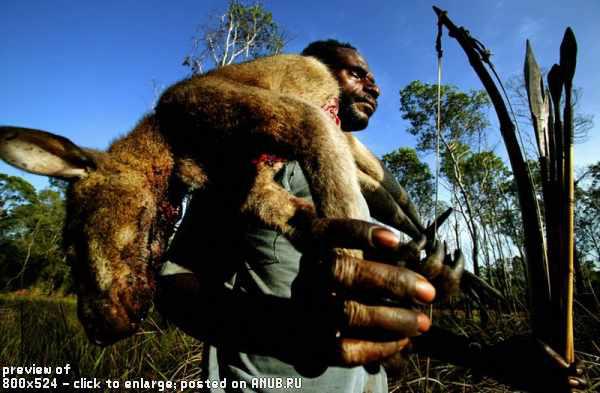
17. Hunters caught wild boar and kuzuara in a remote area along the shores of Lake Murray January 1, 2009. (Brent Stirton / Getty Images)
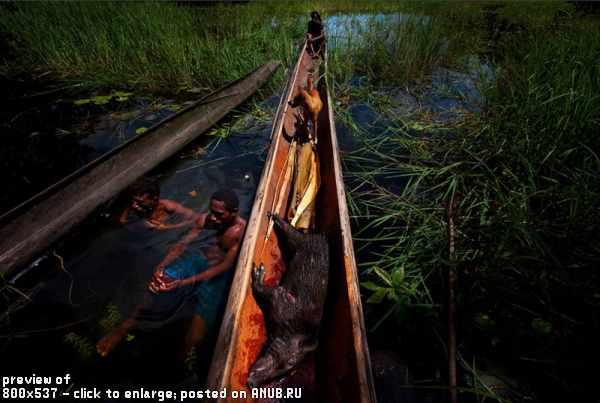
18. Processing in the village Kubut, Lake Murray, Papua New Guinea, January 1, 2009. (Brent Stirton / Getty Images)

19. Ecological logging, which carries a small group of people. They cut only what you need, and bring to place a small portable mill. (Brent Stirton / Getty Images)
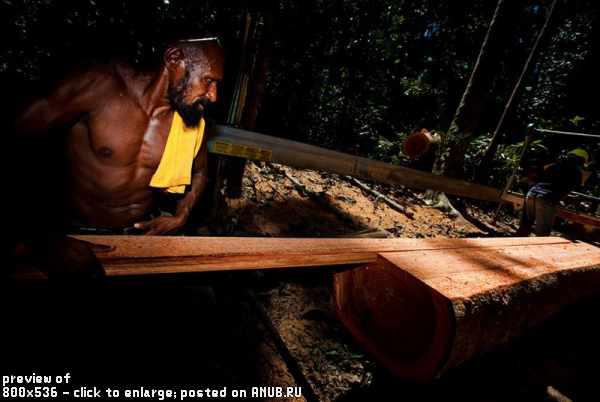
20. Halevy Cen - a former police officer who became an activist environmental protection in the village Kubut, Lake Murray, January 1, 2009. (Brent Stirton / Getty Images)
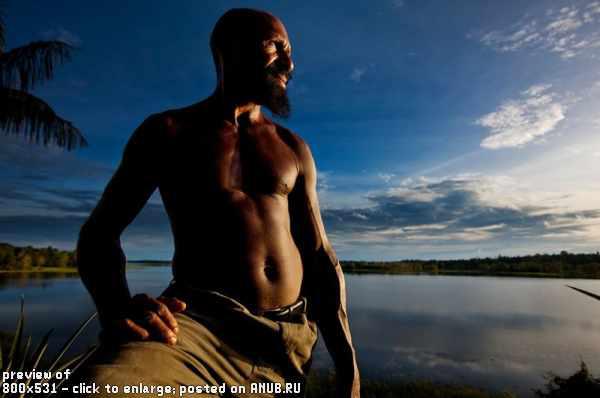
21. A man from the local tribe to clean under the waterfall in the forest near the village in the mountains of Papua New Guinea. (Brent Stirton / Getty Images)
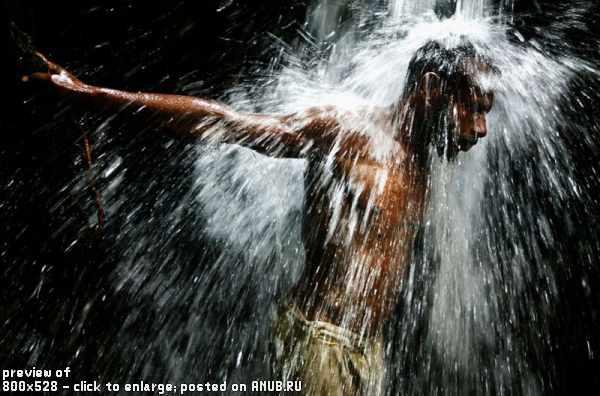
22. Tribe Karawari dwelling in the center of the Sepik River, December 15, 2008. (Brent Stirton / Getty Images)
23

24. Elderly woman fishing on the River Fly in a remote area of Papua New Guinea. (Brent Stirton / Getty Images)

25. Boys playing football in the village Kubut January 1, 2009. (Brent Stirton / Getty Images)

26. Tribe Karawari dwelling in the center of the Sepik River, December 15, 2008. (Brent Stirton / Getty Images)
27. Children from the local village playing Ok Tedi River, surrounded by toxic sediments that are dumped into the river from the mine in Kiunga, Papua New Guinea. Ok Tedi River is also noticeably dry because of these emissions. Scientists have predicted that during the next flood river can poison the land of local communities, which are home to about 30 000 people. (Brent Stirton / Getty Images)
28.
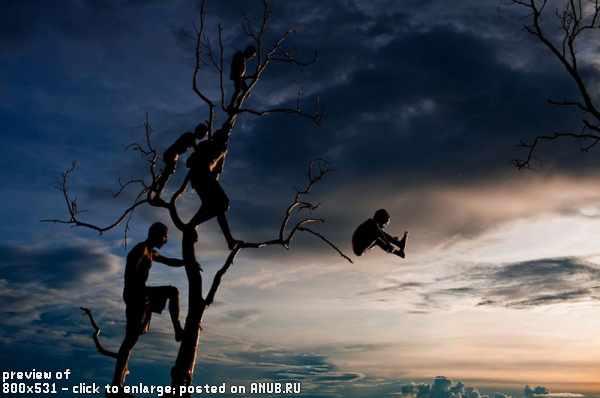
29. A boy stands at the dump in Mount Hagen, where they live, those who moved to the city in the 1970s and used the dump to raise pigs. This is a fairly profitable occupation in Papua New Guinea. (Brent Stirton / Getty Images)
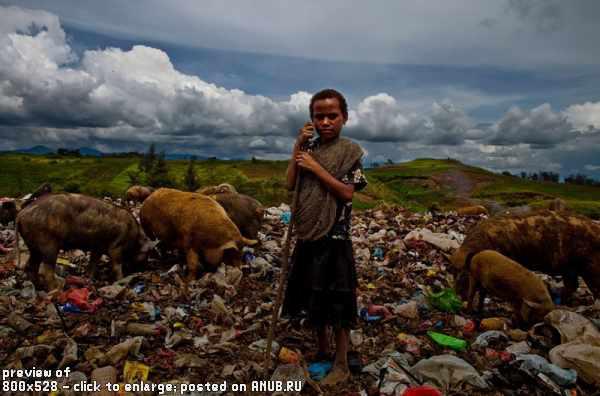
30. Refugees and members of the movement "Free West Papua" in a refugee camp on the outskirts of Port Morsebay December 23, 2008. (Brent Stirton / Getty Images)

31. People Highlands at local roadside market in Mount Hagen December 16, 2009. (Brent Stirton / Getty Images)
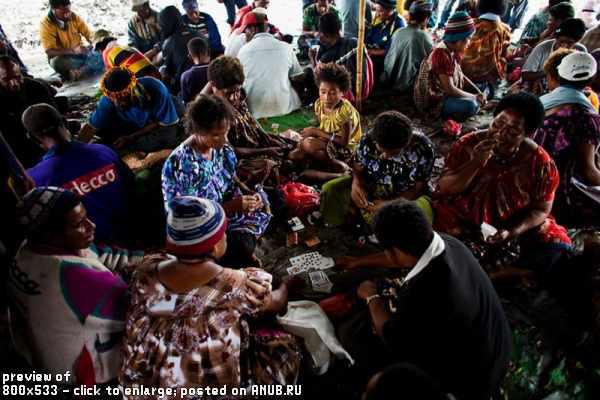
32. A member of the gangster groups "split" with hand-made pistol. The picture was taken in a poor settlement 12 km from Port Morsebay. (Brent Stirton / Getty Images)
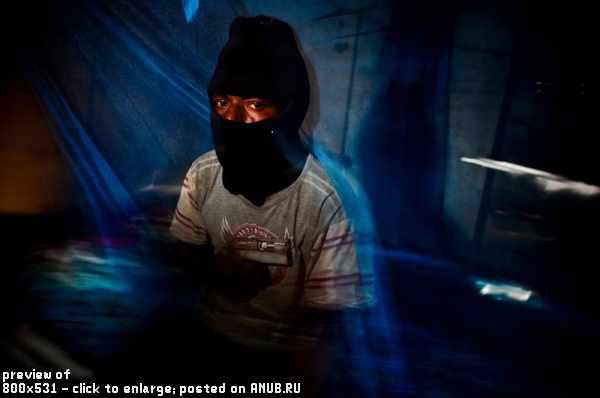
33. Christians tribe Hela Hooley in the Catholic Church in the Tari Gap December 17, 2008. (Brent Stirton)
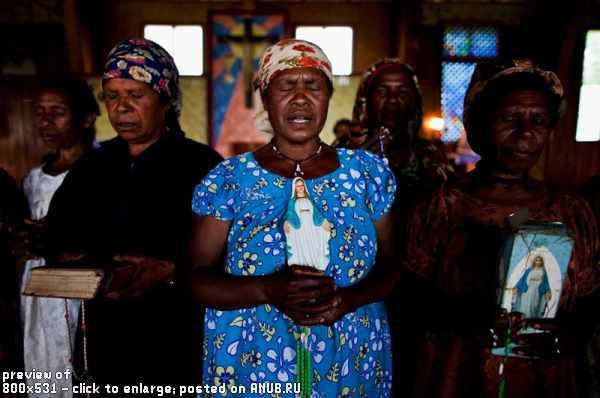
34. Photo Karawari tribe from central Sepik River December 15, 2008. (Brent Stirton / Getty Images)
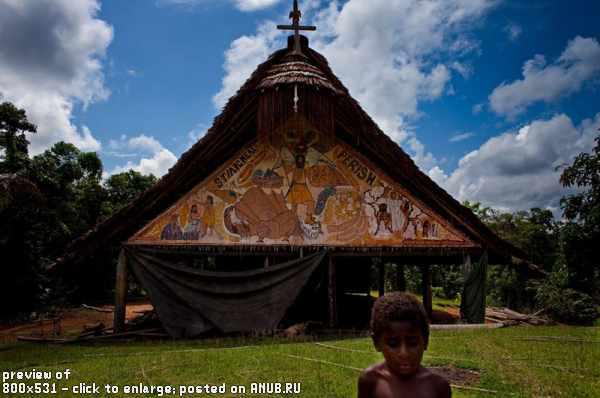
35
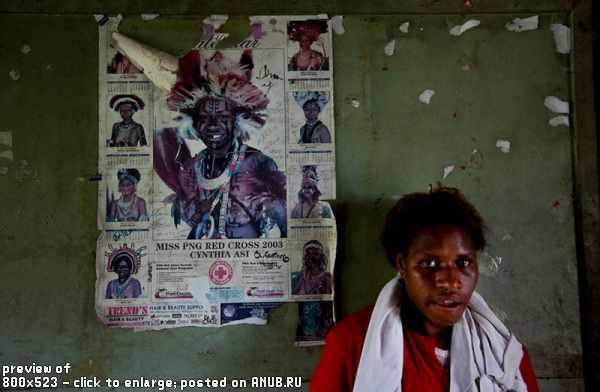
36. confused in a brothel in Port Morsebay - the capital of Papua New Guinea 25 December 2008. AIDS is a relatively new but rapidly progressing disease in Papua New Guinea. Modern life preaches the idea of atheism and infidelity, resulting in a real sexual revolution began. It is believed that in Papua New Guinea is already up to 11% of HIV infected patients. Illiteracy, lack of any action by the government, as well as prejudice and superstition - it is for these reasons that the local population is small, he knows about sex and AIDS. (Brent Stirton / Getty Images)
37. AIDS orphans with a sick family in a poor settlement in Port Morsebay - the capital of Papua New Guinea 25 December 2008. (Brent Stirton / Getty Images)
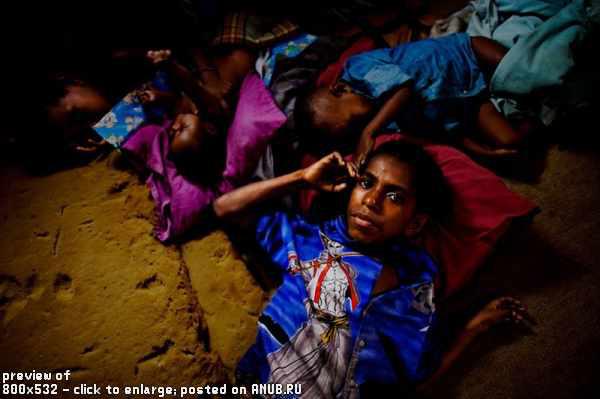

2. Photo Juli Uigmana the meeting Sing Sing, Tari Gap, Papua New Guinea on 17 December 2008. (Brent Stirton / Getty Images)

3. Juli Uigman expects a shower in my room in the Tari Gap, Papua New Guinea on 17 December 2008. He smokes and does traditional paint on the face, the rain then washed it. (Brent Stirton / Getty Images)

4. Photograph of the traditional "dirty man" in a village in the province of Chimbu. (Brent Stirton / Getty Images)

5. tribal ceremony with the image of "spirits", also known as the "skeleton" that attack wood spirit, known here under the name of the Omo Masalai in the village in the province of Chimbu. (Brent Stirton / Getty Images)

6. Photos from the ceremony, the bride price in the village of Chimbu Province, Papua New Guinea. (Brent Stirton / Getty Images)
7. Photos from the Sepik River - a remote region of Papua New Guinea. Here the lifestyle is still almost entirely dependent on relations between people and nature. (Brent Stirton / Getty Images)

8. Tribe Karawari Sepik River in December 15, 2009. (Brent Stirton / Getty Images)

9. Tribe Karawari Sepik River in December 15, 2009. (Brent Stirton / Getty Images)

10. The village elder in a traditional ceremonial costumes in Mount Hagen December 16, 2008. (Brent Stirton / Getty Images)

11. Local people on the river Fly - a remote region of Papua New Guinea, where the lifestyle also comes from the relationship between humans and nature. (Brent Stirton / Getty Images)

12. Tribe Karawari living in the center of the river Sepik, December 15, 2008. Karawari - the most remote tribes living in the floodplain. Many villages are located along the river. The most recent settlement dates back 1996 years. (Brent Stirton / Getty Images)

13. Tribe Karawari in the center of the Sepik River. (Brent Stirton / Getty Images)

14. Hunting for wild boar and cassowary in remote areas along the shores of Lake Myurrye, Papua New Guinea, January 1, 1009. These communities live in harmony with nature. They hunt, fish, and are engaged in agriculture, but always do so in complete harmony with nature. They drove away Malaysian loggers, harm the environment. (Brent Stirton / Getty Images)

15. Hunting for wild boar and cassowary in remote areas along the shores of Lake Myurrye, Papua New Guinea, January 1, 1009. (Brent Stirton / Getty Images)

16. Locals River Fly - a remote region of Papua New Guinea, where people live in harmony with nature. (Brent Stirton / Getty Images)

17. Hunters caught wild boar and kuzuara in a remote area along the shores of Lake Murray January 1, 2009. (Brent Stirton / Getty Images)

18. Processing in the village Kubut, Lake Murray, Papua New Guinea, January 1, 2009. (Brent Stirton / Getty Images)

19. Ecological logging, which carries a small group of people. They cut only what you need, and bring to place a small portable mill. (Brent Stirton / Getty Images)

20. Halevy Cen - a former police officer who became an activist environmental protection in the village Kubut, Lake Murray, January 1, 2009. (Brent Stirton / Getty Images)

21. A man from the local tribe to clean under the waterfall in the forest near the village in the mountains of Papua New Guinea. (Brent Stirton / Getty Images)

22. Tribe Karawari dwelling in the center of the Sepik River, December 15, 2008. (Brent Stirton / Getty Images)
23

24. Elderly woman fishing on the River Fly in a remote area of Papua New Guinea. (Brent Stirton / Getty Images)

25. Boys playing football in the village Kubut January 1, 2009. (Brent Stirton / Getty Images)

26. Tribe Karawari dwelling in the center of the Sepik River, December 15, 2008. (Brent Stirton / Getty Images)
27. Children from the local village playing Ok Tedi River, surrounded by toxic sediments that are dumped into the river from the mine in Kiunga, Papua New Guinea. Ok Tedi River is also noticeably dry because of these emissions. Scientists have predicted that during the next flood river can poison the land of local communities, which are home to about 30 000 people. (Brent Stirton / Getty Images)
28.

29. A boy stands at the dump in Mount Hagen, where they live, those who moved to the city in the 1970s and used the dump to raise pigs. This is a fairly profitable occupation in Papua New Guinea. (Brent Stirton / Getty Images)

30. Refugees and members of the movement "Free West Papua" in a refugee camp on the outskirts of Port Morsebay December 23, 2008. (Brent Stirton / Getty Images)

31. People Highlands at local roadside market in Mount Hagen December 16, 2009. (Brent Stirton / Getty Images)

32. A member of the gangster groups "split" with hand-made pistol. The picture was taken in a poor settlement 12 km from Port Morsebay. (Brent Stirton / Getty Images)

33. Christians tribe Hela Hooley in the Catholic Church in the Tari Gap December 17, 2008. (Brent Stirton)

34. Photo Karawari tribe from central Sepik River December 15, 2008. (Brent Stirton / Getty Images)

35

36. confused in a brothel in Port Morsebay - the capital of Papua New Guinea 25 December 2008. AIDS is a relatively new but rapidly progressing disease in Papua New Guinea. Modern life preaches the idea of atheism and infidelity, resulting in a real sexual revolution began. It is believed that in Papua New Guinea is already up to 11% of HIV infected patients. Illiteracy, lack of any action by the government, as well as prejudice and superstition - it is for these reasons that the local population is small, he knows about sex and AIDS. (Brent Stirton / Getty Images)
37. AIDS orphans with a sick family in a poor settlement in Port Morsebay - the capital of Papua New Guinea 25 December 2008. (Brent Stirton / Getty Images)


